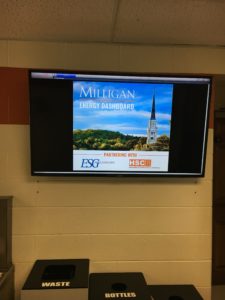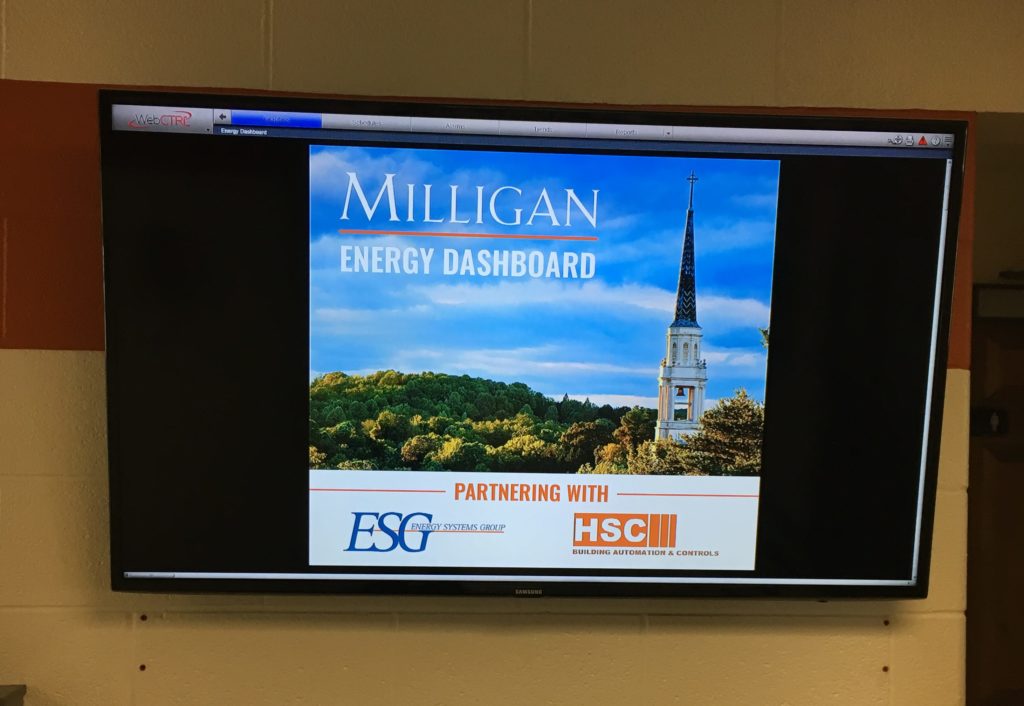Last year on Earth Day, President Bill Greer announced a “green” initiative to adapt our campus infrastructure in a way that would reduce our energy consumption by over 20 percent.
In early March, as part of this green initiative plan, two televisions were placed on campus to serve as energy dashboards. One is located in Sutton Hall outside of the cafeteria, and the other is located in the Student Union Building outside of the Grille. The energy dashboards currently consist of eight screens that display each building and its energy usage. The televisions display the two primary categories of electricity and water consumption.
“The main focus of that was water and electricity conservation, and the dashboards are a way to take what was pretty much a behind-the-scenes type of project and give a little bit of a demonstration of the results,” Brent Nipper, director of property and risk management, said.
According to the United States Energy Information Administration, heating and cooling requires the most amount of energy in a commercial setting. The Department of Energy states that water use contributes to more than 20 percent of a utility bill in a commercial setting. Therefore, it makes sense as to why Milligan chose these two areas to focus on.
By updating the HVAC (heating, ventilation and air conditioning) system, Energy Systems Group was able to help Milligan reduce its electricity usage, which can be viewed on the graphs measured in kWh (kilowatt hours).
The base data is historical data gathered from utility bills. You can view the current data with the base data for a before-and-after comparison on the dashboards. The same can be done with water, although it is measured in gallons.
Nipper says the measurements are “not exactly real time, but it takes a reading every few minutes, so it’s pretty close.”
Some students have noticed that Webb Hall appears to use both more electricity and more water than the other residence halls. Nipper said this is because the building provides less of an opportunity to conserve energy.
“Webb is an older building, and (it’s) not having as much electric use, because you don’t have air conditioning. There’s not as much opportunity to conserve, so it’s not going to show the savings that some of (the other buildings) will.”
The energy dashboards do more than just cut energy expenses. The system has a unique feature that truly benefits our maintenence workers. Nipper said that the system can detect when something goes wrong by activating an alert for it to be checked on.
“The project is 95 percent done,” Nipper said. “We are hoping to have it done within the next few weeks, and, at that time, we will sort of announce completion of it and probably provide some more information about the dashboards.”

